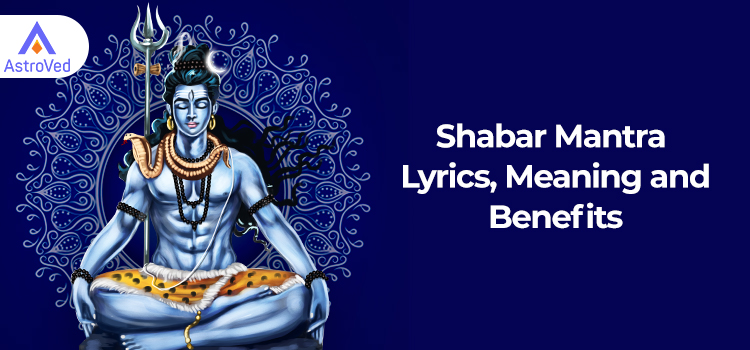Shabar Mantras are Mantras that are in local Indian dialects. They are attributed mostly to the Nath Samprada and tribals. Shabar Mantras tend to lack purity, fixed ritual, and correct grammar. But they are powerful for two reasons. The first reason is that when a powerful Saadhak asks the deity for a favor in his name, the Saadhak can bind that energy in a Shabar Mantra that his initiates can recite while seeking quick remedies. Such Mantras should be given by that Saadhak himself. The second reason is that local deities who protect a local clan of tribals are bound to these Mantras; hence, they grant only the wishes of that clan.
Shabar Mantras stem from a compilation of many prevalent Mantras. They were propagated by Guru Gorakhnath, who was a renowned yogi in the Nath tradition.
Shabar Mantras are unique, as they were supposedly recited by Lord Shiva himself to Goddess Parvati. He also explained the power and benefits of these Mantras while revealing them to her.
Unlike the traditional Sanskrit Mantras, Shabar Mantras are in the colloquial accents and dialects of local villages. They differ from the Sanskrit mantras that are chanted for the vibrational energy they produce.
With their roots in rural India, Shabar Mantras blend the traditional yoga language of Sanskrit with the vernacular languages. This makes them accessible to a larger audience.

<h2>Shabar Mantra Lyrics and Meaning</h2>
Anyone can chant Shabar Mantra 108 times in the early morning, facing the north direction. The Mantra is given below:
Om hrim srim gom, Goraksanathaya vidmahe
Sunya putraya dhimahi tanno, Gorakasa niranjanah prachodayat
Om hrim srim gom, Hum phat svaha
Om hrim srim gom, Goraksa hum phat svaha
Om hrim srim gom goraksa, Niranjanatmane hum phat svaha
Om hrim srim gom, Goraksanathaya vidmahe:
The first part of the Mantra calls upon Guru Gorakhnath, using the sacred syllables ‘Om,’ ‘Hrim,’ and ‘Srim’. The phrase ‘Goraksanathaya’ means “We know of Gorakshnath”. ‘Vidmahe’ refers to knowledge and understanding. It indicates a recognition of the spiritual presence of Guru Gorakhnath.
Sunya putraya dhimahi tanno, Gorakasa niranjanah prachodayat:
‘Sunya putraya dhimahi tanno’ translates to “We meditate upon the son of the Sun”. Guru
Gorakhnath is associated with solar power, so this phrase alludes to it. The second part, ‘Gorakasa niranjanah prachodayat’, calls for the awakening of the pure or unblemished form of Goraksha (another name for Gorakhnath).
Om hrim srim gom, Hum phat svaha:
The syllables ‘Om,’ ‘Hrim,’ and Srim’ are used again to begin this phrase. The second part, ‘Ham Phat Svaha,’ is a common ending for many Mantras. It is a spiritual invocation often used to conclude Sanskrit prayers and Mantras.
Om hrim srim gom, Goraksa hum phat svaha:
This line is similar to the previous line, but it includes ‘Goraksa’, a reference to Gorakhnath.
Om hrim srim gom goraksa, Niranjanatmane hum phat svaha:
The concluding part of the Mantra includes the phrase ‘Niranjanatmane,’ which denotes the ‘pure or unblemished soul’, referring to Gorakhnath’s pure spiritual essence.
Shabar Mantras are simple yet powerful. They can bestow many benefits when one chants them with faith. Unlike other mantras, anybody can chant them. One’s religious or social background is irrelevant. They do not need elaborate rituals or perfect pronunciation.
Let us see what their benefits are:
Significance of Shabar Mantras
Shabar Mantras are powerful tools that help one to face obstacles and challenges. They can enable one to achieve one’s goals. Regular recitation of Shabar Mantras reduces stress and anxiety and brings mental peace.
Shabar Mantra is considered “Siddha” or perfected from its inception. Unlike the Beej Mantras or Vedic Mantras, which call for proper enunciation and specific rituals to attain Mantra Siddhi or experience the full power and benefits of the Mantra, anyone can chant Shabar Mantras, irrespective of their age, gender, or caste. This ensures that even ordinary people can access these spiritual tools and benefit from them.
Shabar Mantras have a unique phonic structure. They typically end with the words “Phat Svaha.” This sound element is designed to invoke spiritual energy.